
views
Preparing Your Skin for Shaving
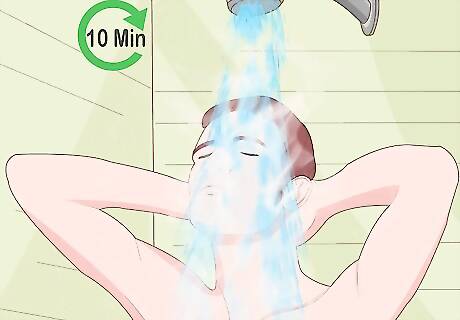
Take a hot shower or bath to soften your skin before shaving. Stay in the bath or shower for a few minutes to let your skin get moist; this will also help rid your skin of oils and dead skin cells that can clog your razorblade. Wetting your hair with hot water will soften the skin, helping to prevent your razor from breaking the surface of it. 10 to 15 minutes is ideal, but any longer and your skin will start to wrinkle, making it harder to shave. If you're only shaving your face, a few splashes of warm water will do, as will wetting a towel with warm water and wrapping it around your face for 5-10 minutes.
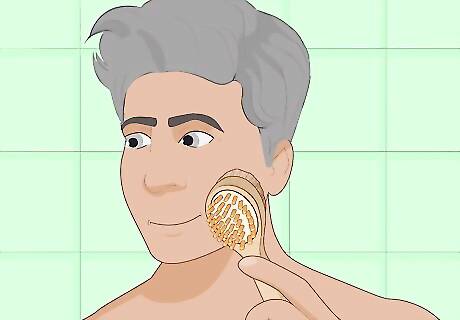
Exfoliate your skin with a bristled brush or an exfoliating scrub. Let warm water run over your skin for a few minutes, then use the brush or scrub in a circular motion on the area you're going to shave. Exfoliating scrubs may be labelled as "body scrubs" or "cleansing scrubs." These are best used when you're shaving your face. If you're shaving your body, an exfoliating brush will work better. Exfoliating rids your skin of dead skin cells, which can clog up your razor if left untreated. A clogged razor is more likely to hop around your skin, leading to cuts or razor burns.
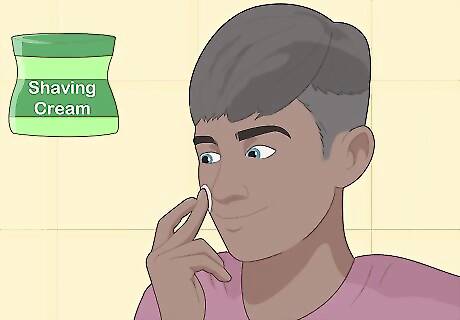
Use shaving cream or gel on the area you're going to shave. Apply a liberal amount of shaving cream or gel across the area you're going to shave; it should be completely covered. Shaving creams and gels will help a razor glide smoothly across your skin. Not using a shaving cream can force the razor to jump across your skin, which will certainly lead to a cut. If you have excessively dry skin, look for “sensitive skin” shaving creams. If you don’t have any shaving cream or gel, hair conditioner can work in a pinch. You can also use soap lather.
Shaving Correctly
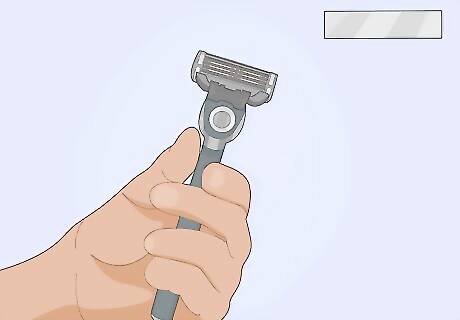
Shave with a sharp, clean razor. Make sure that your razor is sharp, as razors with dull blades are more likely to cut you than sharp ones. You can tell that your razor is beginning to dull when it tugs and nicks at your skin. This means that the blade isn't sharp enough to cut your hair and is pulling it instead. Make sure that your razor is free of moisture and rust before shaving: these can cause infections from bacteria.
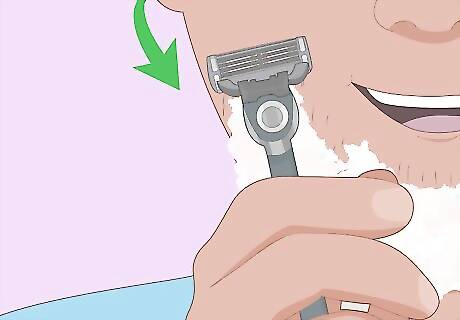
Shave with the grain to avoid irritation. Shaving towards the angle of hair growth (known as the “grain”) ensures that your razor travels smoothly, which will help you avoid cuts and razor burn. Identify the grain by running your fingertips through your hair. If your fingertips encounter resistance, you’re moving your fingers against the grain, whereas if your fingertips move smoothly across the hair, you’re moving with the grain. Some people shave their legs against the grain. However, only do this after your hairs are very short, since shaving against the grain while your hair is long could tug the hair from its follicle, which can irritate your skin.
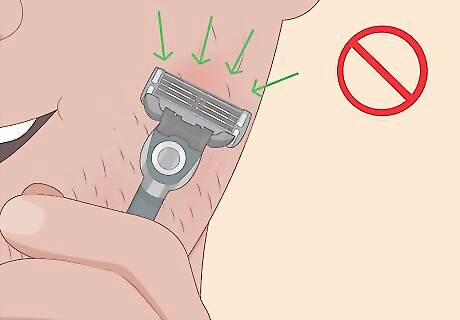
Avoid pressing down on your razor when you shave. Applying a lot of pressure on the razor might seem like a good idea in theory, but since it’s pressing into your skin, the risk of a nick or cut is much greater. Allow the weight of the razor to do the work for you; if it's sharp enough, it'll work.
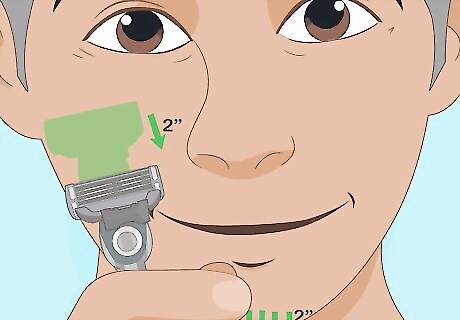
Use short strokes when shaving. Short strokes will ensure that you have control of the blade while you’re shaving. It will also ensure that you hit every hair, whereas a long stroke might make you miss some hairs. If you're shaving your face, use strokes of 1–2 inches (2.5–5.1 cm). For the rest of your body, strokes of 2–4 inches (5.1–10.2 cm) will work.
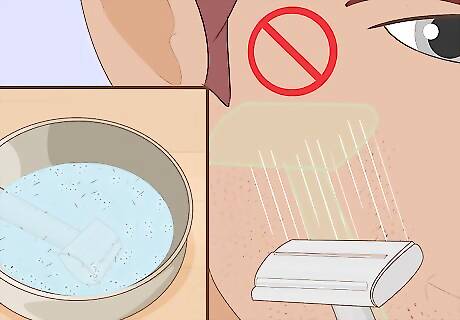
Go slow, and rinse the razor between strokes. Go slowly while shaving, and rinse the razor off every few strokes: this will keep the razor clean and more able to glide smoothly across your skin. Speeding through a shave makes it likely that you will cut yourself.
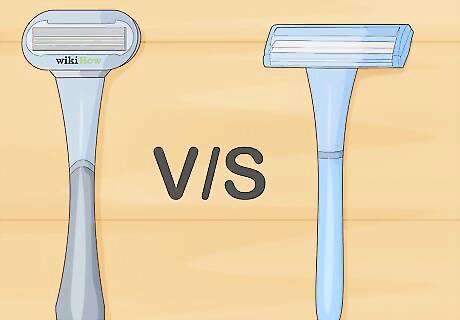
Try multi-blade razors. As an option, try using razors with 4-5 blades instead of those with 1-2 blades. 1-2-blade razors are likely to drag against the skin, making it more likely that you will cut yourself. Razors with four or five blades distribute pressure more evenly across your skin, which will give you a safer shave.
Taking Care of Your Razor
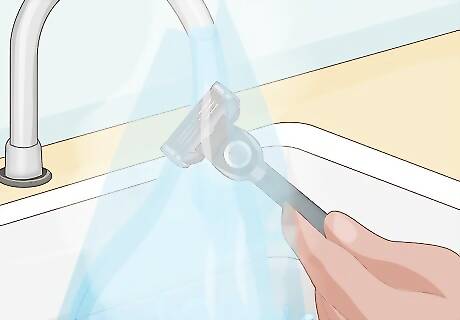
Rinse the razor with hot water after shaving. Before you store your razor after shaving, be sure to rinse it in piping-hot water. This will ensure that the razor is free from bacteria, dead skin, hair, and shaving cream, which could cause infection if left on the blade. If possible, leave the razor in alcohol to disinfect everything after each use.
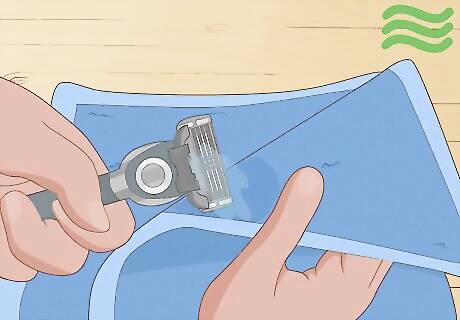
Dry your razor thoroughly. Dry your razor with a clean towel before storing it. Getting rid of the liquid on the surface of the razor can help stop the spread of bacteria. If any fibers from the towel get stuck in the razor, use tweezers to pull them out; never use your fingers for this.
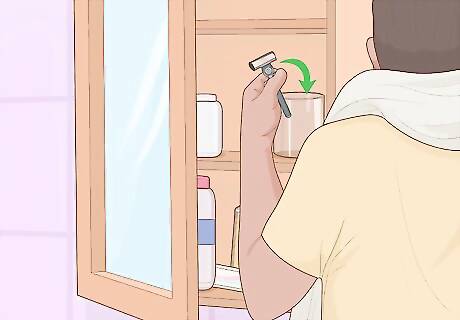
Store your razor someplace dry. Find an upright, dry spot where your razor can have ventilation; this will help it dry fully. Keeping your razor someplace wet—such as your shower or bath—can lead to rust and bacteria.

Replace your razor's blades at the first sign of dullness. Once your razor isn't cutting as well—when hairs are getting snagged in the blade instead of cut—replace the blades. Older, dull blades are less effective than sharp ones, and are more likely to cut you while shaving. Depending on the blade, this could happen as soon as the fifth shave, so pay attention to how your razor is working.



















Comments
0 comment